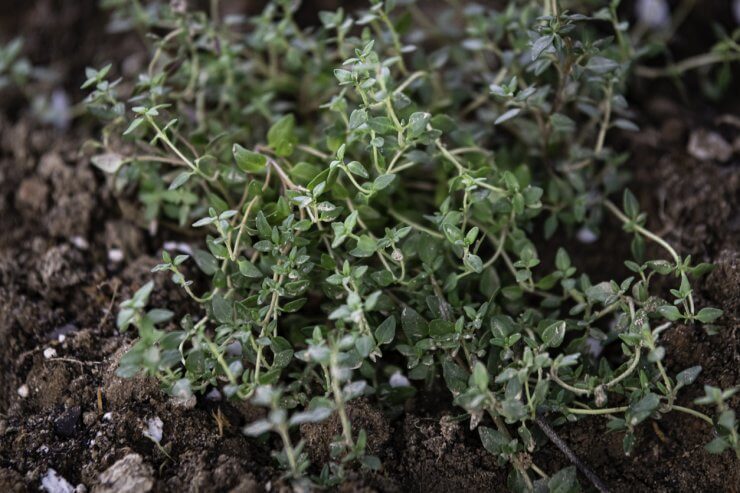
A well-weeded thyme patch
When it comes to weeding thyme, early and often is best. If you’ve used weed-free soil and well-rotted organic matter and laid down mulch or gravel, you shouldn’t have a big weed problem.
Properly preparing your soil is an excellent preventive measure against the emergence of weeds. When you till or cultivate the area where you’ll plant thyme, remove weeds and debris. You’ll likely find that the first few weeks after planting are the only time you’ll be pulling up weeds in your thyme garden. After planting and initial weeding, place mulch, such as gravel or light organic material around the plants to further deter weeds. Be careful not to apply dense mulch that inhibits water drainage.
Once your thyme plants have started growing, the space in between plants will fill in, and that will smother most weeds. This is especially true of creeping varieties—gardeners often plant creeping thyme as a groundcover to suppress weeds.
If weeds come up between your more mature thyme plants during the season, work the soil around the base of the plants with a hand rake or garden fork—only deep enough to kill weeds and not damage the plant’s roots.
Do you have problems with weeds in your thyme garden? How do you handle weeding—and preventing weeds in the first place? Please tell us how you control weeds in your thyme garden.


 Previous
Previous

